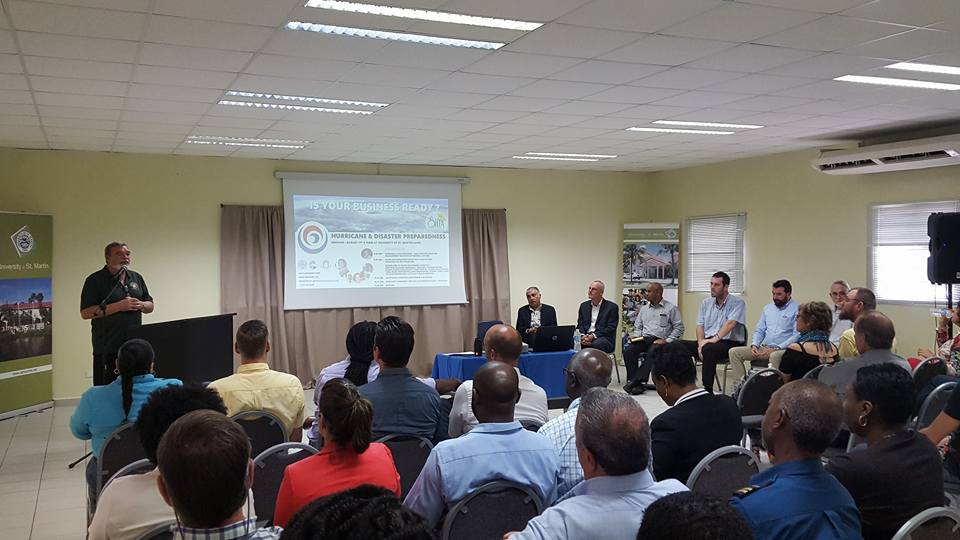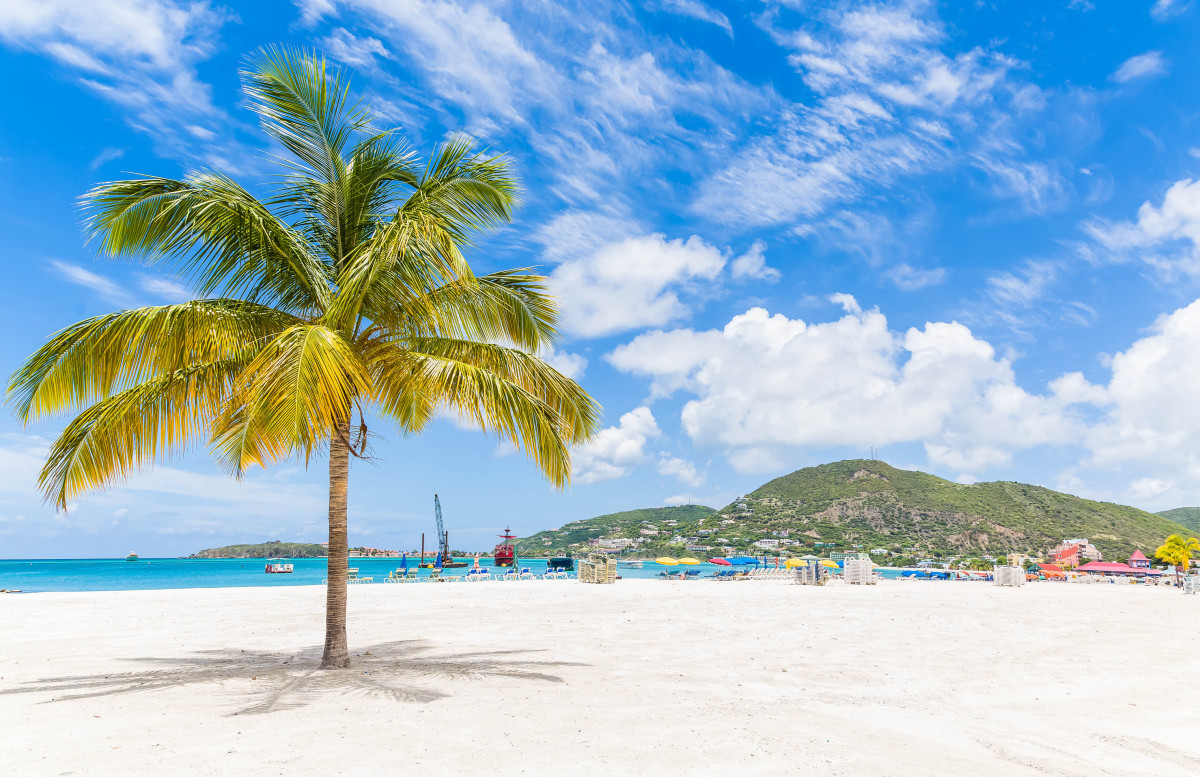52 Business representatives convened this Thursday in order to prepare for the implications of natural disasters, as the traditionally most active hurricane month of September closes in. The Hurricane & Disaster Preparedness Seminar at USM allowed various business and government professionals involved with the topic share their experiences, learn lessons from the past and exchange recommendations for natural disasters to come.
The Hurricane and Disaster Preparedness Seminar is organized periodically by the Sint Maarten Hospitality and Trade Association (SHTA) in conjunction with the Section Disaster Management of the Ministry of General Affairs. This edition, UTS-TDC training center and University Sint Maarten (USM) joined the partnership.
Hurricanes and other natural disasters often do much damage to the country’s economy. By organizing the event for members and non-members alike, SHTA tries to assist Sint Maarten businesses in avoiding as much loss as possible by disasters.
Section Head of Disaster Management Paul Martens shared insights with the visiting companies how government prepares for hurricanes, as well as aftermath disasters like flooding’s and fires. Martens shared an overview of structures in place in order for companies to know what mechanisms are to be expected active in case natural disasters occur.
After Martens’ presentation, moderator David MacGregor (UTS-TDC) interviewed the panel of professionals. Mr. Joseph Isaac of the Meteorological Department (Ministry of General Affairs) shared insights in the responsibilities of the local meteorological office. He described the challenge of the multinational information coordination within the region as Saba and Statia are coordinated from the Dutch meteorological office KNMI, the French side by Metéo France in Guadeloupe, and Anguilla receives weather condition intelligence from Antigua.
Assistant General Manager Thijs Scheepers of Divi Hotel provided an outlook how resorts deal with tourists.
To refresh memory, movies and pictures were shown of the incredible size of damage done during past hurricanes like Donna, Luis and Gonzalo. Entrepreneur Danny Ramchandani shared how the devastation that hurricane Luis did to his company Ram’s, and what lessons he learned from that. “Even back then, we were prepared – but it shows you can never prepare enough for a natural disaster the size of a hurricane”. His current companies run a hour by hour preparation program to rapidly respond to hurricane threats.
How to insure for Hurricanes was an important topic. Marc Groeneveld, representing worldwide insurer AON on Sint Maarten, advised companies to often visit their insurance companies. “Many companies do not exactly know what they are insured for during hurricanes, and sometimes even pay too much. As your company is subject to change, so is what you insure for”. From his personal experience, Ramchandani added that after Luis, insurances sometimes returned only 30% of what entrepreneurs were counting on.
Groeneveld advised yearly visits to the insurance company can avoid exactly those disappointments. “An often heard misconception is that objects should be left untouched until the damage is assessed by your insurer. Companies should act like a good father in family life: you can remove the rubble, but make sure you have evidence of the damage done.” He cited an example of a disappeared dinghy, most probably victim of looting during the storm. Whereas the cable clearly was cut, the owner threw away the remains of the chain – making him lose that insurance. According to Groeneveld, modern technology assists with your insurance case. ”When your battery allows, make sure to make as much pictures as possible from the damage.”
Robert Judd is the key operational officer when a hurricane hits University Sint Maarten (USM). As the University has a unique location amidst the water masses of the Salt Pond, the University seals its windows, and barricades lower floors with sand bags to prevent flooding. Judd warned not to overlook details that might seem common “As a university with both offices and classrooms using pricy education equipment, we have to make sure we unplug everything to prevent short circuits”.
From his own experience as a certified Business Emergency Recovery Trainer by the American B.E.R.T. program, moderator David MacGregor advised not to forget the importance of human capital for the companies. “With program like BERT, you do not only prepare buildings, but the families that really run your business. Respect as an entrepreneur can only be expected by giving respect to the families you represent. This is why our program includes apps to rebuild the social fabric of companies directly after communications restore: who is where on the island, are they safe, and finally: what role can they play in getting the company up and running again?”
During a questions and answer session following the contributions, Mr. Ramchandani offered a final advice: “Even though government departments like that of Mr. Isaac and Mr. Martens will act to the best of their abilities, disaster situations are too complex to solely rely on government emergency assistance. Due to the mere nature of disaster, companies need to be prepared for their own recovery and not build on emergency service assistance alone.”


